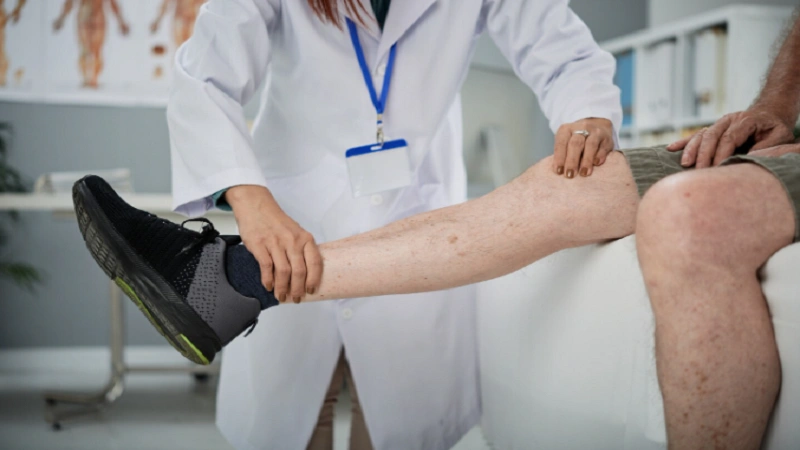How Podiatrists Diagnose and Treat Everyday Foot Issues?
We walk through life with our feet; thus, we do not pay much attention to them until some pain or discomfort occurs. A nagging pain, sore swelling, or even making the nail look ugly, these everyday foot problems can disrupt daily tasks in no time. Living in Florida, a visit to a Podiatrist in St. Petersburg may be the first thing an individual does to discover the cause of the problem and start the recovery. Podiatrists ensure that people can walk pain-free once again, thanks to the modern diagnostic tools and their professional skills and knowledge.
These range in both problem and solution depending on the condition, as a physician trained in the area of podiatry has learned to work on both plantar fasciitis and ingrown toenails, bunions, and heel spurs. How do they diagnose these issues and provide them with the custom care needed to regain foot health and functionality? Let us find out.
Initial Evaluation: What to Expect
It will start with an extensive consultation. This will start with a conversation where your foot and ankle specialist will engage you in talking about your symptoms, medical history, and habits. They may wonder such things as:
When did it begin to hurt?
Does this get aggravated with exercise, or does it get better upon rest?
Did you experience any prior injuries /surgeries?
Resting on this evidence, the podiatrist starts to eliminate the possible reasons and identifies the need to conduct any further tests.
Physical Examination
Then the podiatrist undertakes a practical examination. They examine the structure of the foot, alignment, condition of the skin, nail health, and movement. As such, in case you have heel pain, they might feel the plantar fascia or the Achilles tendon to determine tenderness.
They will also note your gait, standing posture, and see evidence of flat feet, overpronation, or gait abnormalities as a possible source of pain. A thorough physical exam can frequently give useful information without any imaging being necessary.
Diagnostic Imaging and Testing
X-rays, MRIs, or ultrasounds are applied when needed to provide a better illustration of bones, soft tissue, and joints. The tests can reveal certain latent issues, such as stress or the fracture of arthritis, or damage to ligaments.
The diagnoses of blood tests are also possible where chronic or unexplained pain is occurring to identify the disease, such as gout, diabetes, or infections. Diagnosis must be accurate to administer the right line of treatment, and to achieve this, podiatrists utilize all facilities at their disposal.
Common Conditions and Their Treatments
Various conditions are treated by podiatrists whose spectrum may include minor annoyances to more severe conditions. These are some of the most frequent foot problems and the way they are usually treated:
- Plantar Fasciitis
It is one of the frequent causes of heel pain, and it can be caused by the inflammation of the tissue by which the heel to the toes. Physical therapy, night splints, or corticosteroid injections may be requested as treatment depending on the condition, and also orthotics. Surgery is, in a few rare cases, recommended.
- Ingrown Toenails
These are some of the causes involving the growth of nail edges into the skin of their surroundings, which results in pain and infections. A podiatrist may treat the issue by trimming the problematic portion of the nail or slicing it off, and in case of infection, may prescribe certain antibiotics.
- Bunions, Hammertoes
Such deformities may be painful and impair the mobility of a person. More routine care like padding, shoe inserts, and physical therapy usually does the trick, though the more serious cases might need surgical intervention.
- Athlete, Foot and Fungal Infections
In flaky, itchy skin or discoloration of nails, topical or oral antifungals are given by the podiatrist. The tips of prevention are also given to prevent reinfection.
- Heel Spurs
They are generally managed by elongation moves, orthotics, and irritation-calming pharmaceuticals.
- Diabetic Foot Care
Diabetes patients are in danger of getting foot complications such as ulcers and circulation problems. It is vital to have a podiatrist review every once in a while for prevention and early diagnosis.
Custom Orthotics and Footwear Advice
In most leg ailments, improper footwear contributes either to the development of the disease or to the aggravation of the condition. Podiatrists can order custom-fitted orthotics and, in many cases, prescribe supportive shoes to align biomechanical problems. These appliances are custom-made and fit to your foot structure and can reduce pressure, fix alignment, and avoid additional harm.
Minor Procedures and In-Office Treatments
These are the wart removal, abscess drainage, and minor corrective surgeries. The recovery tends to be fast, and the follow-up care maintains adequate healing and recovery.
Modern treatment is also gaining popularity, such as laser therapy, cryotherapy, and shockwave therapy in podiatry clinics. The advantages of these new ways are the use of non-invasive procedures and outstanding outcomes on chronic pain and soft tissue injuries.
When to See a Podiatrist?
When some changes in your feet occur, including increased pain, redness, numbness, or colour changes in nail structure, it would be prudent to see a podiatrist. Small problems are commonly intercepted as they are being immature before becoming big ones.
Foot care is recommended for children, sports participants, elderly individuals, and some individuals with medical conditions that are chronic in nature. The understanding of foot anatomy and biomechanics enables the podiatrist to have care plans that will suit every age and activity level.
Women need to take care of their feet in the interest of good health. Through the services of an experienced podiatrist, you can be sure that simple matters in the foot will no longer affect your daily life and cause chronic troubles. A correct diagnosis and individual treatment will allow you to come to your feet again–with ease and confidence. See more


